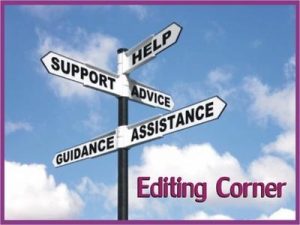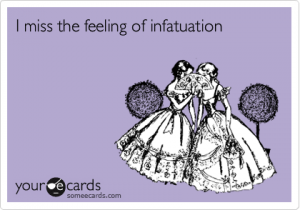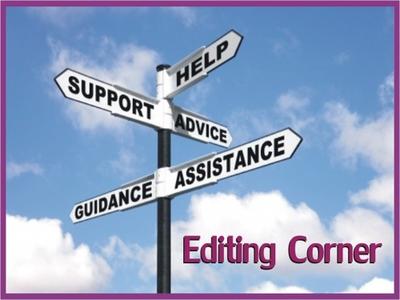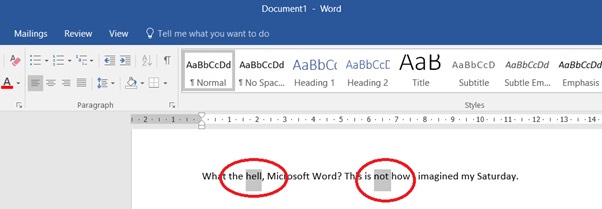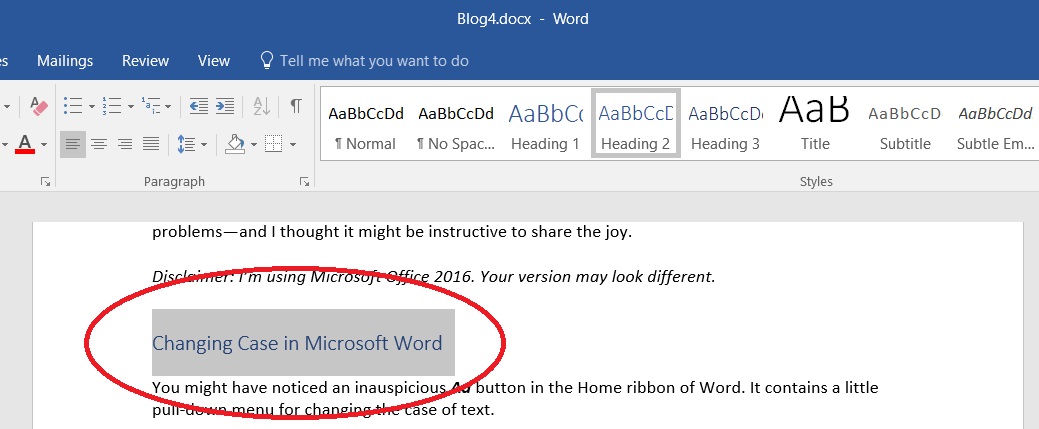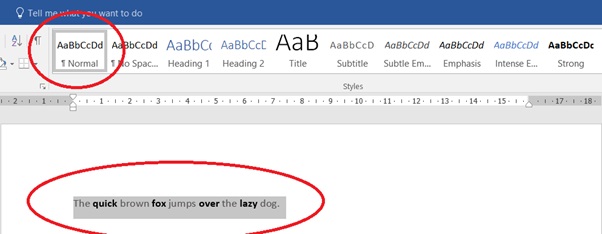One of the indoor activities I do with my son is to print off the ‘disaster movie bingo’ card I have on my hard drive, and then watch one of the many daft movies floating around on Amazon or Netflix. Widely-ignored scientist? Check! Scientist separated from wife? Check! Heroine survives hurricane with hairdo intact? Check!
There are twenty-five items on our card, and I think that the highest marks are tied between 2012, The Day After Tomorrow, and San Andreas.
We play this game as a chance to be creative. It’s fun to chat about what we’d change with the plot or characters to make the film more unpredictable. It helps us to think laterally. However, just as viewers expect certain elements of a disaster movie to be in place, readers have expectations of romance and erotic romance.
World and character creation is tough in any genre. But in romance or erotic romance, with so many story expectations, it can be really tricky to take a common partnership dynamic, a frequent sexual dynamic and a familiar setting, and make something completely new out of it.
I don’t believe for a second that anyone who’s writing for the joy of it writes a story where their main characters sound just like all the other characters they’ve read about and loved. There are inspirations, yes. But people write to bring their own characters to life.
Nevertheless, there are a group of recognised personalities who crop up all over the world of romance and erotic romance who will seem instantly familiar. I’ve summarised four such prototypes in the colossally exaggerated summaries below.
# # # #
The nearly hard-hearted hero
His heart has been hermetically sealed and locked in a vault. He’s too tough for affection or conversation. You have to go at his immaculately-mortared walls with a JCB before he so much as cracks a smile.
- But there’s always one way in, right? There’s always a tiny door through which the heroine/reader sees his very well-hidden soft side:
- He may only speak to the rest of the world twice a year, but he makes a 100mph round trip three times a week to water his grandmother’s spider plants.
- He’s in the ‘Big Brother’ programme and spends every other weekend giving his tiny pal lessons in how to ignore women and field-strip rifles.
- He only roars at the heroine and knocks her to the ground to save her from accidentally stuffing her head into a woodchipper.
- He has a pet bunny/ancient dog to whom he is unwholesomely devoted. He can also be trusted to leap over the fence and give his neighbour’s baby goat mouth-to-mouth resuscitation, or rear baby squirrels by hand.
The Helen of Troy tomboy
Benjamin put down the chainsaw and whisked the little towel from her handy belt to wipe the sweat from her face. She shouldn’t have worn her size-six leggings, though they protected her legs from the flying splinters as she single-handedly took down the copse of dead trees at the far end of the football field. Sweat glued her blue tank to her body, drawing unwanted attention from every jock in the school, and that of a few nerds, all of whom silently admired her lack of self-consciousness. Lumberjacking brought her peace. Benjamin got back to work, ignoring the random taunts from the entire cheerleading squad, who’d gathered at the treeline in full make-up just to emphasise how unlike them she was. They didn’t intimidate her in the slightest; having grown up with sixteen brothers, all in the military, she knew how to handle herself.
Nuff said, I think.
Poor wee self-sacrificial sausage
This is the guy with such a tortured past that he thinks he’s good for nobody, despite the entire cast of the book trying to tell him otherwise on a page-by-page basis. Really, he just won’t be told. He’s on his way to hell, and he won’t take anyone with him. He spends hours alone in his garage, using mufflers to block out any attempts of other characters to so much as compliment him on the nifty paint job on his vintage Mustang.
When the heroine finally engages him in conversation, he gets out of telling her how he really feels by diving between a toddler and an oncoming SUV. Alternatively, he’ll protect her from his scumbag personality by taking her to a ball game, leaving her in her seat while he ‘gets snacks’, and then voices her personal flaws over the PA system. That’ll put her off him for life, thus preventing any hurt feelings in the long term. Because there is no short term for the sacrificial sausage.
The reclusive artiste, Mr Clam
He’s the most amazing thing that the public have never heard of. He’s a reclusive painter who came out of art college with plaudits coming out of his backside, but who gave it all up to care for his brother. Having abandoned his dreams he’s abandoned life, and has long since sent his muse packing with aggressive warnings not to show her face around him ever again, in case he’s tempted to follow his ill-fated dream. Being such a sensitive soul, he’s also got a fantastic palate, and could, if he put his mind to it, get some help to look after his brother while he entered and won the next series of Masterchef.
He’d love someone to love, but they have to genuinely understand his inexplicable paintings, and understand his need to cut himself off from the universe on account of the meltdown he’d encounter if anyone tried to coax him back to the limelight.
He probably wears a smoking jacket and/or a beret.
# # # #
Okay, I warned you about the colossal exaggeration! But I’m sure you’ve come across more than a handful of characters who fit these moulds.
In light-hearted discussion with other editors about these main character (MC) prototypes, a theory emerged about a general tendency towards layering traits. What am I on about, you may well ask.
Okay, let’s take the reclusive Mr Clam as our working example. A writer has decided they want their character to have heavy responsibilities, to be on the shy side, and to have almost savant levels of creativity.
It’s a tripartite starting block for the character, and that’s fine. But what can then happen is that the writer come up with a number of ways in which each of those character features are displayed in practice, and puts nearly all of them into use. For example:
Heavy responsibilities
- Never has any time off and can’t get respite care
- Doesn’t have hobbies outside his areas of genius
- Has been battling depression for a number of years.
- Works exclusively from home
- Brother is very hard work and they struggle to get on
Shy side
- Finds it difficult to start or sustain conversations
- Avoids social media
- Gets all shopping home-delivered
- Turns down seminars and courses
- Timid about critiquing other artists’ work because he’s suffering imposter syndrome after so many years ‘off the scene’
Highly creative
- Is excellent chef
- Brilliant artist
- Harassed by mother into arranging flowers for church as a child
- Used to enjoy doing the costumes for drama groups as a teen
- Writes wonderful poetry.
It’s only when you get significant layering of traits under each element that makes up the MC that a painfully familiar character emerges. It’s not about lack of imagination (the contrary, in fact), but about raising the probability that the writer’s using traits which are often seen before because so many of them are being used.
So, how can this tendency towards trait-layering be taken down a notch once it’s been recognised?
Seek out the double-edged swords
In its simplest terms, this means focusing on one particular trait that a character has, and seeing how it works for and against him. Using Mr Clam again:
His work as an artist makes good use of his ability to focus intensely, but he’s terrible at multi-tasking, which means he invariably fails to preheat the oven. He may love home cooking, and have a fantastic palate, but his successes are somewhat hit and miss.
If he struggles with his relationship with his brother, then he’ll need an outlet. He will drive out to get his own shopping but only at one particular store, where the owner is so grumpy that there’s no danger of small talk. He also wants some contact with like-minded souls, so he does do social media, but only Twitter and Reddit. He also still helps the drama group with their sets, but takes items home to work on, rather than doing the painting in situ.
Evolve quirks and contradictions
Perhaps his hand-eye coordination is exemplary, but he has no sense of direction. So, he’s an excellent driver with good reflexes, but cannot for the life of him read a map (a source of endless embarrassment).
He’s shy until someone gets him on a topic which is a bugbear, at which point he has to be silenced with duct tape.
He’s intolerant over issues where he’d be expected to have compassion. Perhaps his brother’s condition and demanding behaviour have caused Mr Clam to emotionally associate immobility with impatience, because that’s what he puts up with all the time.
His dark and angsty painting is phenomenal, but his dark and angsty poetry puts people to sleep.
So, there are a couple of techniques to steer a character off the road oft-taken. I hope they’re helpful tips. To sign off, here are some extremely useful resources for digging into all peculiar corners of the character’s life and psyche:
https://www.amazon.com/Plot-Thickens-Ways-Bring-Fiction-ebook/dp/B007AXPL7M/
https://www.amazon.com/Positive-Trait-Thesaurus-Character-Attributes-ebook/dp/B00FVZDVS2/

